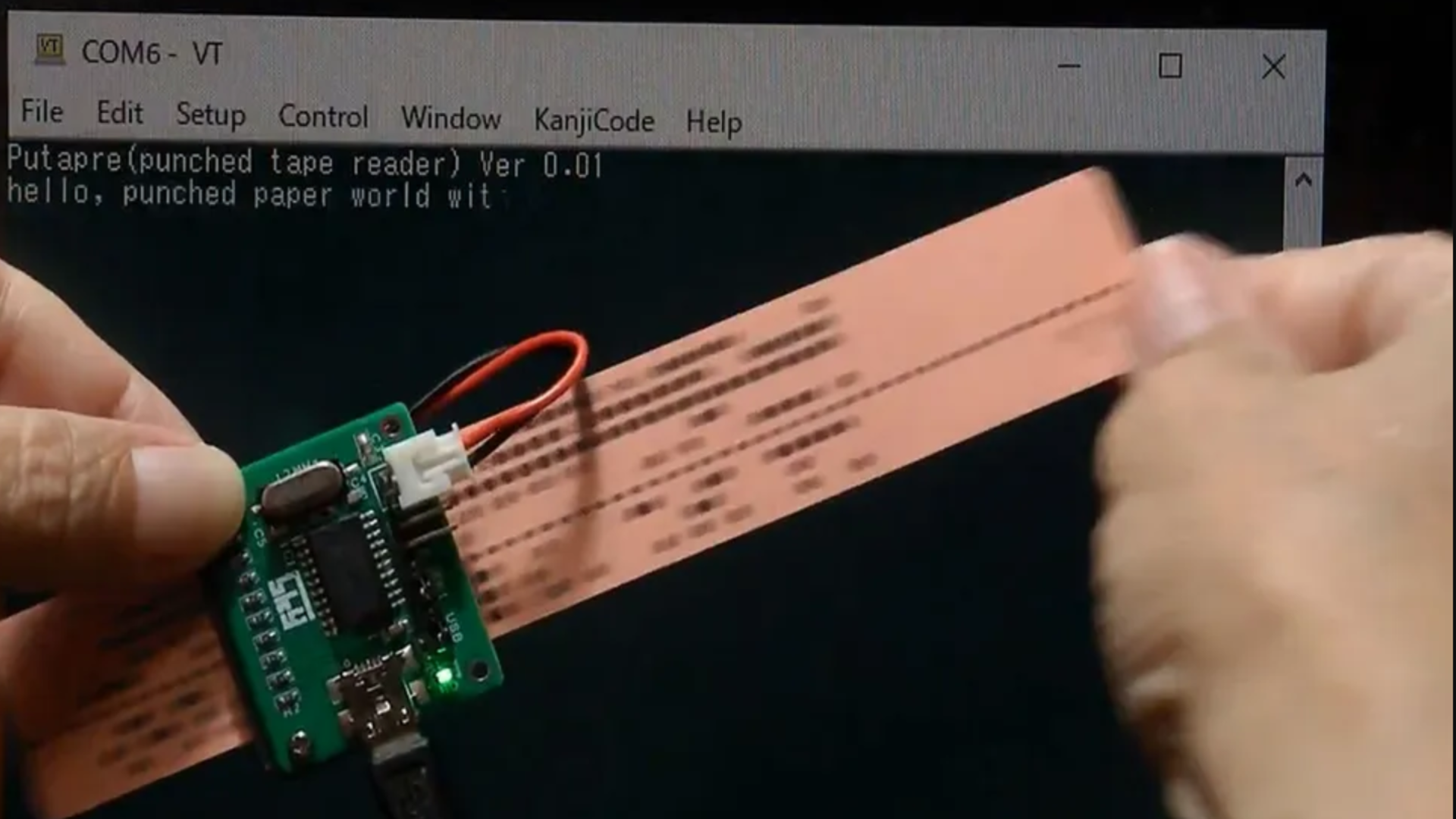Retro computer boffin creates an all-new perforated tape reader - just don't expect high data reading speeds
Simple microcontroller and some LEDs turned into a wild retro tape reader

- New custom tape reader relies on a minimal optical setup using modern parts
- LED tuning and sensor calibration demanded serious patience during early testing phases
- Crosstalk reduction became a key factor in stabilizing signal accuracy consistently
A retro computing enthusiast has built a freshly created perforated tape reader which relies on a minimal set of modern components called Putapre.
The device comes from Skyriver, which wanted a simple optical system capable of handling perforated tape without the complexity of vintage contact mechanisms.
Its design uses an 8-bit PIC18 microcontroller connected through USB and relies on a phototransistor paired with an infrared LED to detect each hole on the tape with controlled light passing through the paper.
How the optical system was tuned for accuracy
Skyriver explains that getting the lighting and sensor balance right took considerable time - the LED strength needed repeated adjustments to avoid false triggers, while the phototransistor sensitivity had to be configured to detect accurate transitions.
The maker also focused on reducing crosstalk between channels, which required several hardware tweaks.
The choice of tape material turned out to be important because different papers reacted differently to the light path, and after several attempts, the system reached a point where the tape could pass through cleanly with consistent readings.
To stabilize the tape, Skyriver created a 3D printed guide that keeps the material aligned with the LED and sensor.
Sign up to the TechRadar Pro newsletter to get all the top news, opinion, features and guidance your business needs to succeed!
The guide ensured the tape does not shift during movement and allows the optical path to remain stable throughout the feed.
With this mechanical support in place and some practice in handling the setup, the reader became predictable enough for demonstration.
Skyriver notes that these refinements were essential for achieving any reliable performance from the hardware.
The software responsible for interpreting the signals currently performs only the essential operations, but Skyriver is committed to improving it later.
Early estimates indicate that the reader operates at around fifty bytes per second, which means users should not expect high data reading speeds.
However, this rate is still faster than older contact systems but remains modest by any modern standard.
Perforated tapes occupied an important place in early computing before magnetic media replaced them, and they still attract interest among enthusiasts.
Skyriver hints at designing a compact punching device so that tapes can be produced without using vector files and laser cutters.
That said, the output of this project is quite slow, and its purpose is very narrow, which suggests that it will have limited practical value.
Still, it reflects the appeal of rebuilding historical technology for experimentation rather than efficiency.
Follow TechRadar on Google News and add us as a preferred source to get our expert news, reviews, and opinion in your feeds. Make sure to click the Follow button!
And of course you can also follow TechRadar on TikTok for news, reviews, unboxings in video form, and get regular updates from us on WhatsApp too.

Efosa has been writing about technology for over 7 years, initially driven by curiosity but now fueled by a strong passion for the field. He holds both a Master's and a PhD in sciences, which provided him with a solid foundation in analytical thinking.
You must confirm your public display name before commenting
Please logout and then login again, you will then be prompted to enter your display name.